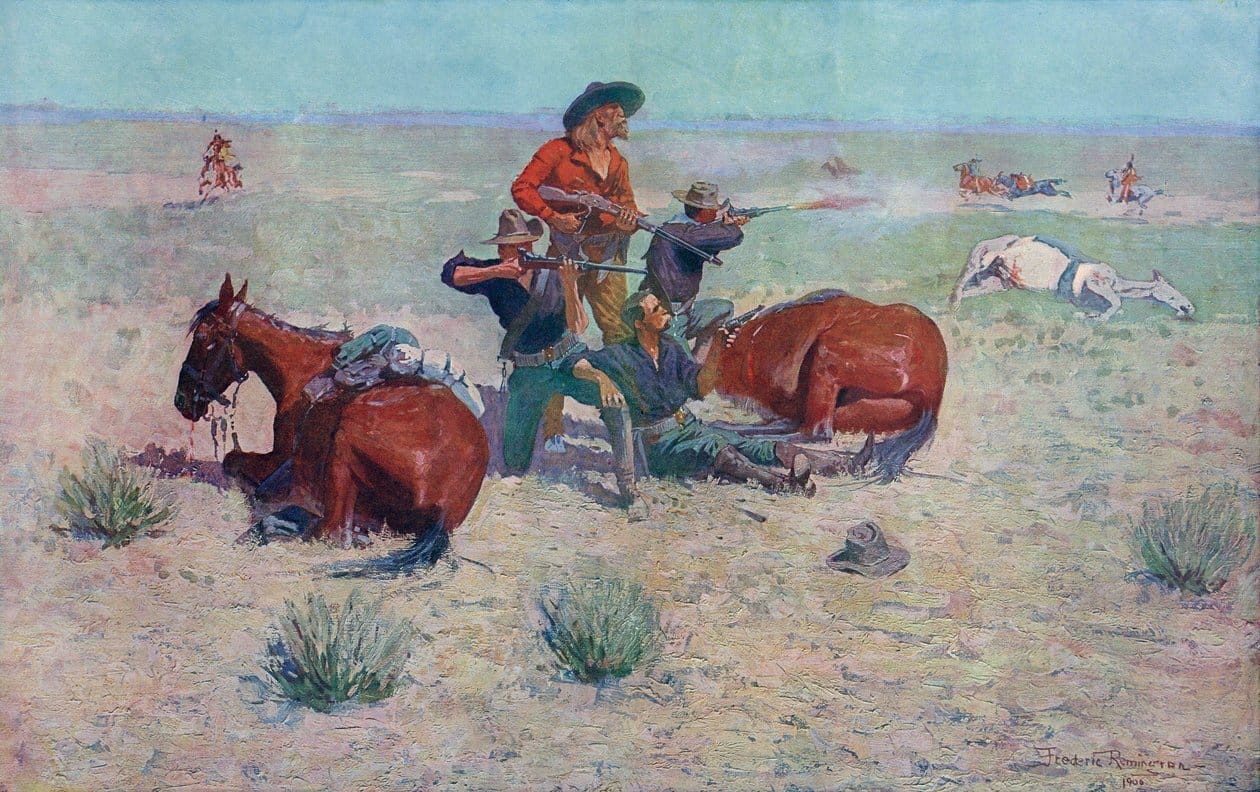- HOKC Newsletter
- Posts
- The War For Colorado
The War For Colorado
The Conflict Between American Settlers And The Mighty Cheyenne

The Cheyenne tribe’s conflict with settlers in Colorado during the 1800s was marked by violence, broken treaties, and a devastating loss of life and land. As white settlers and prospectors surged westward following the discovery of gold in Colorado in 1858, longstanding Cheyenne hunting grounds and sacred lands were rapidly overrun. The resulting tension between the Cheyenne people and the encroaching U.S. population escalated into a series of tragic confrontations that forever altered the fate of the tribe.
Before the gold rush, the Cheyenne had signed several treaties with the U.S. government, most notably the Treaty of Fort Laramie in 1851. This agreement recognized Cheyenne land across much of present-day Colorado, Wyoming, Nebraska, and Kansas. In return for peace and safe passage of settlers, the government promised the tribe protection and annuities. However, as more whites flooded into the region, the U.S. government abandoned its commitments. In 1861, under pressure, some Cheyenne leaders signed the Treaty of Fort Wise, which ceded most of their land and confined the tribe to a small reservation in southeastern Colorado. Many Cheyenne, particularly the Dog Soldiers—an influential warrior society—refused to recognize this treaty, seeing it as a betrayal.
Tensions erupted into open warfare in 1864, during what became known as the Colorado War. That summer, isolated raids and skirmishes took place across the plains. Settlers demanded retaliation. Despite attempts by peace chiefs like Black Kettle to negotiate and avoid bloodshed, the situation deteriorated. Black Kettle had even brought his band to camp near Fort Lyon under the U.S. flag as a sign of peace.
Then came the Sand Creek Massacre on November 29, 1864—one of the most infamous atrocities of the Indian Wars. Colonel John Chivington, a former Methodist minister and fervent Indian-hater, led 700 Colorado volunteer troops in a dawn attack on Black Kettle’s camp at Sand Creek. Despite flying both an American and white flag of truce, the Cheyenne were slaughtered. At least 150 Cheyenne and Arapaho—mostly women, children, and the elderly—were killed. Many were mutilated. The brutality shocked even some military officials and triggered congressional investigations.
Far from ending hostilities, the massacre ignited a wider war across the plains. Cheyenne, Arapaho, and Lakota warriors retaliated with coordinated raids across Colorado, Kansas, and Nebraska. The Dog Soldiers led a fierce resistance, attacking stagecoaches, wagon trains, and settlements. One of the most significant battles was the 1865 Battle of Julesburg, where Native forces dealt a serious blow to the U.S. Army and civilian infrastructure.
By the late 1860s, the U.S. military responded with overwhelming force. The Cheyenne were relentlessly pursued, their villages burned, and their food stores destroyed. The Medicine Lodge Treaty of 1867 forced the Southern Cheyenne onto a reservation in Indian Territory (present-day Oklahoma). The Northern Cheyenne would continue to resist, but the tribe’s freedom on the Colorado plains was lost.
The Cheyenne’s conflict with Colorado settlers is a stark reminder of the cost of westward expansion. It is a story of betrayal, resistance, and survival—and of a people who fought to defend their homeland against overwhelming odds.
To learn more about the war for Colorado, check out the HOKC episode linked below! Brought to you by History At The OK Corral: Home Of History’s Shootouts & Showdowns!